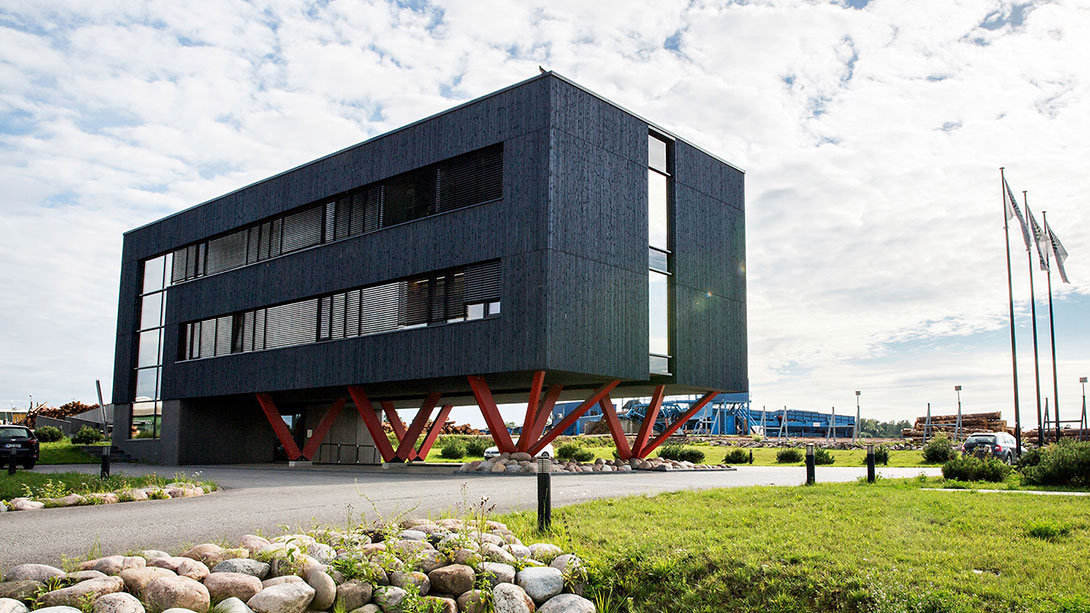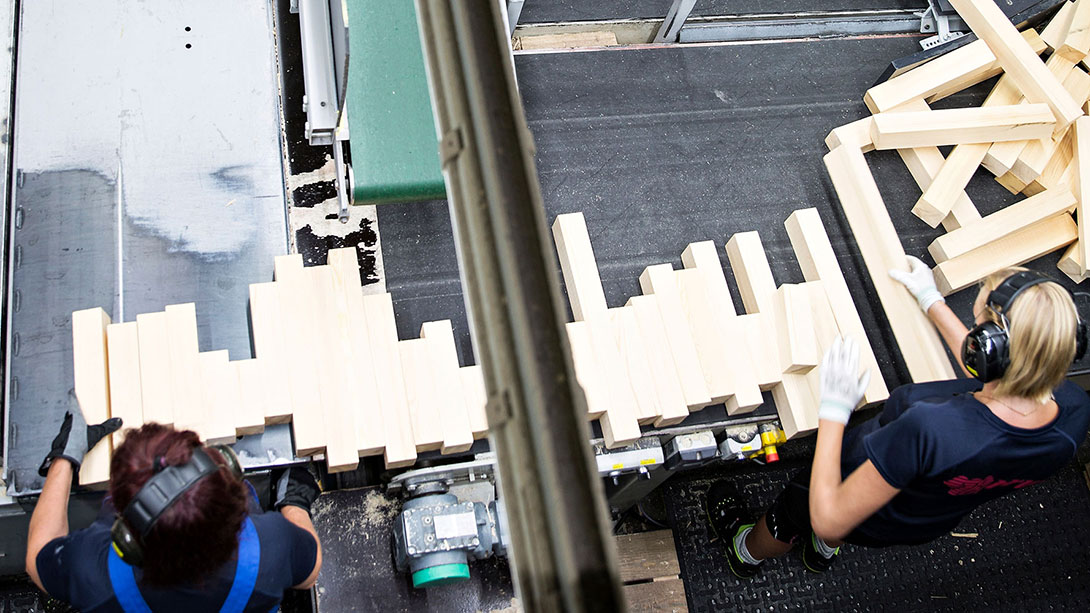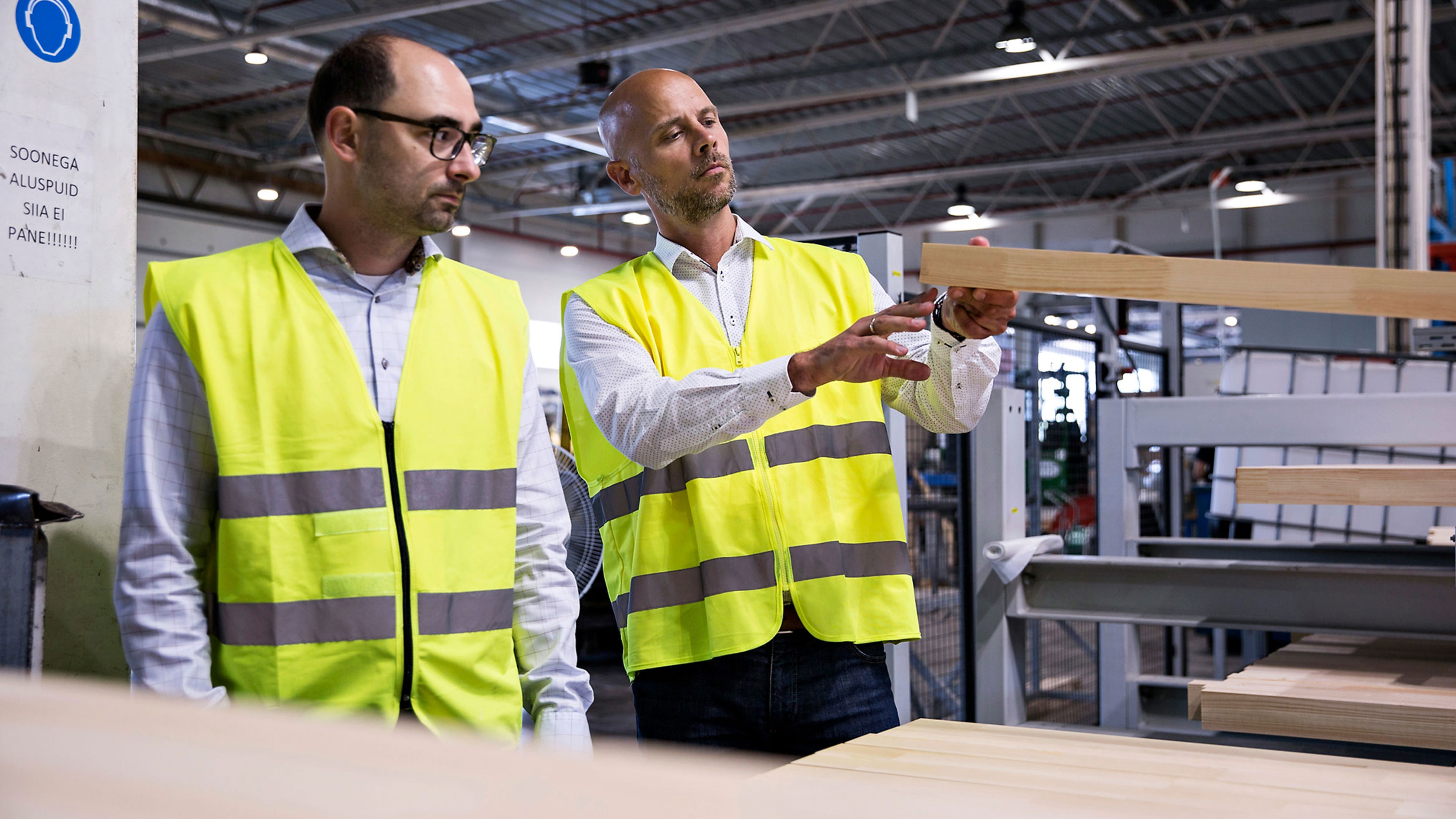“Our core business is to transform logs to client-specific window and door components. We also offer the widest possible range of services related to these products,” says Morten Glinvad, Sales Director of Barrus.
The raw material for the components comes mostly from the company’s sawmill that has the annual output of 130,000 m³. Barrus also uses 40,000–45,000 m³ timber that comes from external suppliers. One of the most significant external suppliers is Metsä Fibre.

Metsä Fibre as a strategic partner
“We have been working with Metsä Fibre for over five years. They understand this business, and know what a component producer like us needs. Metsä Fibre always tries to find solutions together with us,” explains Janar Tatomir, Manager of Purchase and Sales at Barrus.
Glinvad describes Metsä Fibre as a strategic partner for Barrus.
“For example, if we have an issue with the raw material, we often turn to Metsä Fibre and ask if they have experienced similar situations. They listen to us with an open mind and offer support,” Glinvad says.
Maintaining stocks for customers
Barrus is today a big player in the Northern European market of window and door components. In 2020, company produced approximately 82,000 m³ finger-jointed components.
Although the production volumes are high, flexibility is the company’s most critical asset, Tatomir says.
“When the order is placed, we can deliver customised profiles in 1–5 days anywhere in the Nordics and the Baltic countries.”
In addition to in-house warehousing, the fast delivery is based on smooth logistics. Barrus' location in Southern Estonia guarantees fast connections to all main destinations.
Finger-jointing improves stability and durability
Finger-jointed components are more stable and durable than solid wood. Painting and surface-treating them is also easier.

The finger-jointing process starts with the scanning of the timber on a fast-moving production line. The cameras identify knots, dents, resin pockets, cracks, and other defects, which are removed automatically. The remaining defect-free pieces move on to jointing.
A vertical saw blade and a horizontal spindle shape the joints precisely. Pieces are finally glued and pressed together to form flawless components. Some components designed for wider cross-sections are also laminated.
To ensure the quality of the components, Barrus has 70 checkpoints in the production line.
New factory increases capacity
Barrus was the first company in Estonia to start making components for the window industry in 1995.
“There is no one with more experience in this sector. Flexibility and know-how developed over 25 years of making components is the most valuable certificate we have,” Glinvad says.
Today Barrus is once again on the threshold of something new. In order to meet the increased demand, it is now building a new factory. The capacity is expected to rise to 120,000 m³.
“The new factory will have the most modern production line in the industry. Only four people are neede per shift to get the job done. We will achieve increased efficiency and will become even more competitive in the market,” Glinvad says.
This article was originally published in Timber Magazine issue 2020–2021. Take a look at the magazine.
